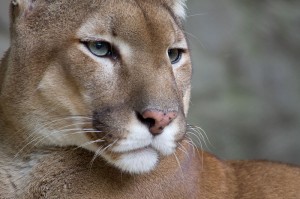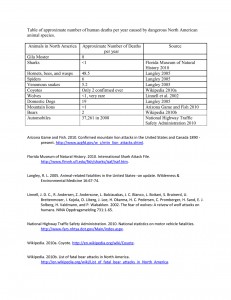They go by many names: puma, mountain lion, mountain cat, catamount, and panther, and scientifically as Puma concolor. The mountain lion is presently North America’s second largest cat, with the jaguar (Panthera onca) being the largest.
Mountain lions are widely distributed, from the Yukon Territory in Canada south through the western states, through Mexico and to the tip of South America, giving it one of the widest distributions of any species in the New World. There is a second population center in Florida, a relic population from when the species was spread coast to coast during the Ice Age. Recently, there is evidence that they are pushing their way onto the Great Plains states from the west, with reports of sightings as far east as Kansas.
They are large predators, with males weighing approximately 140 pounds, and females 90. They are considered the largest of the small cats. What?
Cats have been divided into two subfamilies, with the big cats being tigers, lions, leopards, and jaguars. The small cat subfamily includes the smaller cats like lynx and a host of species like jungle and mountain cats, marbled cat, and ocelot. The small cats also include your house cat.
Like all cats, the mountain lion is carnivorous and eats meat exclusively. They will eat anything they can catch, from insects to large animals like deer, and very occasionally elk and moose. They also are known to kill domestic livestock including cattle, horses, and sheep. It is this that caused the cats to almost be exterminated, but with legal protection their numbers are making a comeback.
This post is another in the dangerous animals series where we are exploring animals of North America that could be considered a threat to humans. However, like all the other animals, the threat is very small. Mountain lions have been known to attack and kill people, but it is a rare occurrence. Humans are increasingly moving into remote areas that host mountain lions, and encounters are increasingly likely, but mostly encounters involve seeing the tail-end of the cat disappearing.
Attacks are rare because unless they are threatened or cornered, attacks are brought about as the cat is hunting for prey, and since they are not habituated to seeing humans as prey, they avoid people. Many who are attacked are smaller in stature, such as children or women, and victims are often jogging or engaged in a similar activity that might trigger the pursuit instinct in the cat when they are very hungry.
It is for this reason that it is recommended that if you encounter a mountain lion you should make yourself look less like prey and more like a handful. Standing up large, waving your arms, shouting, and such things will discourage the cat from attacking. Do not run.
Between 1890 and 2005 there were 88 attacks on people, and 20 fatalities (Arizona Game and Fish 2010), so on average there are a few attacks, and fewer than a single death, each year. As far as risks that we live with everyday this is really is not much of a danger.
I have been fortunate to have seen a glimpse of one of these great beasts in the wild, and if you are so lucky, cherish the moment.
Arizona Game and Fish. 2010. Confirmed mountain lion attacks in the United States and Canada 1890 – present. http://www.azgfd.gov/w_c/mtn_lion_attacks.shtml.


